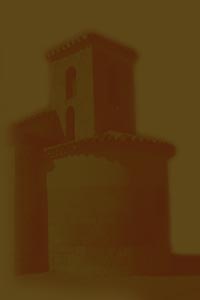The oldest remnants of human habitation
in the municipality of Gallocanta go back to the
Early
Bronze Age. Other significant findings are
the
Celtiberian remains, walls of large
stones discovered inside the city precinct, in the same
place where the castle stood during medieval times.
After that, these lands are hardly mentioned until
the conquest by Alfonso I the Battler,
around 1120. From then on, Gallocanta was considered
a district of Daroca, until 1248
when James I of Aragon granted it
privileges which led to the setting up of the Community
of the Daroca Villages.
The first time Gallocanta is mentioned in a document
is in 1205, when the bishop of Saragossa, Raimundo
de Castrocol, assigned to Daroca the rents and tithes
of many of the villages that depended on the town.
Because it was located right on the border, the region
of the lagoon played a prominent role throughout the
Middle Ages in the wars between Aragon
and Castile. Gallocanta castle was
built on a hill inside the town and was visible from
practically the entire lagoon basin. Today there is
practically nothing left of it because it was dismantled
and the stone was used for other buildings. Some of
its cornerstones can be seen in nearby buildings and
in the walls of the church.
The original village had a mill which was documented
before 1333 and gradually grew around the castle.
The urban quarter spread out to such an extent that
it occupied the area between the current parish church
and the castle. The church was first built in the
XVIII century beside a small cemetery. The area around
the plaza gradually became the town centre where most
of the public services were located, the blacksmith’s,
the council building and the schools.




